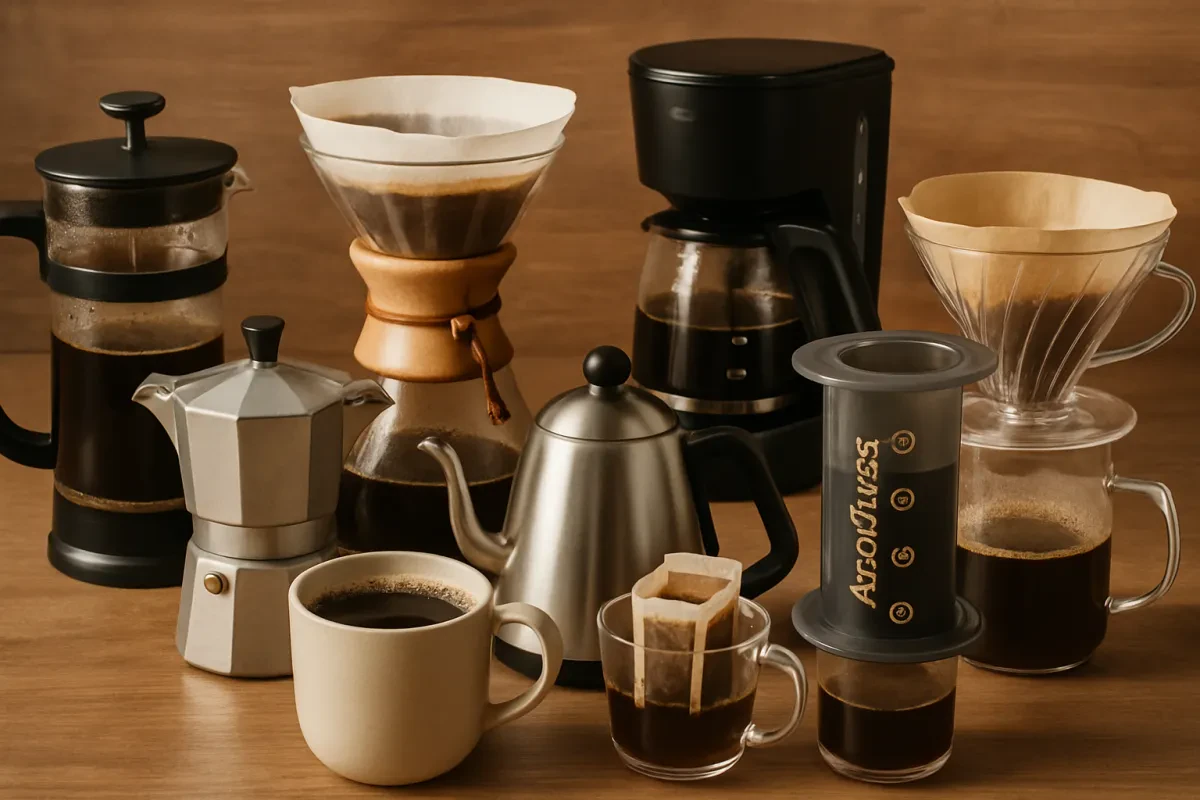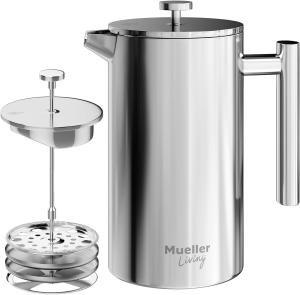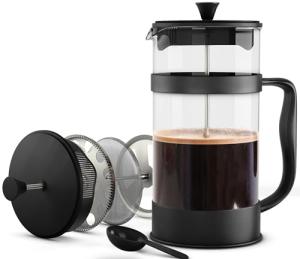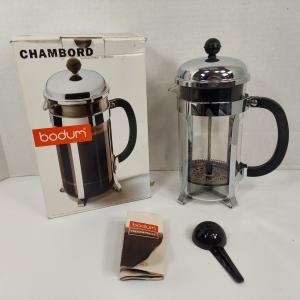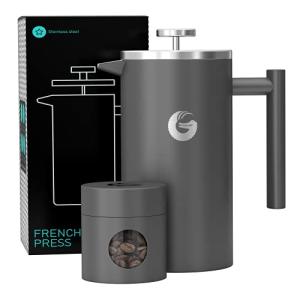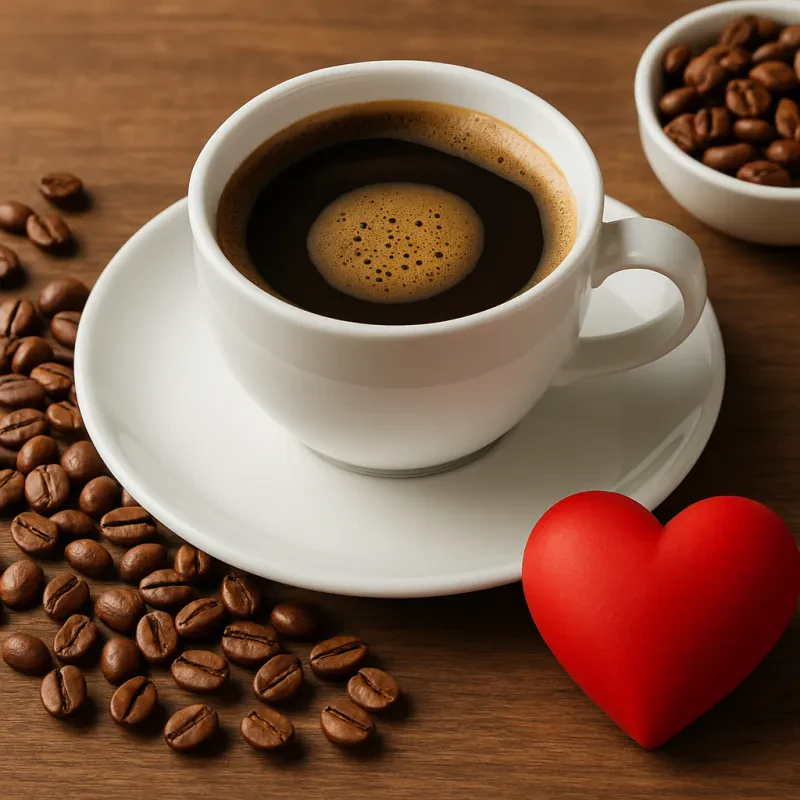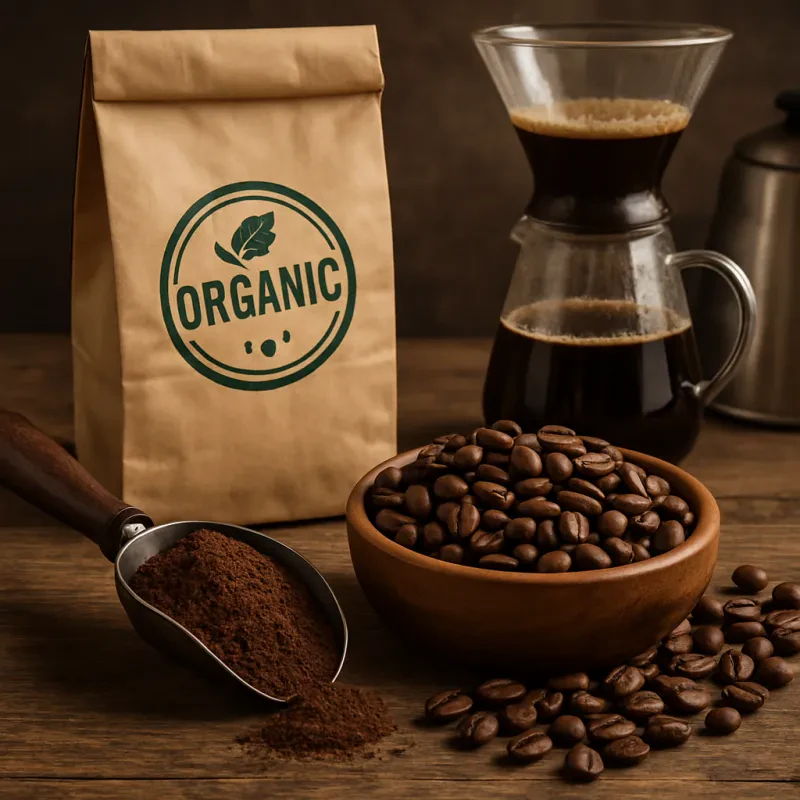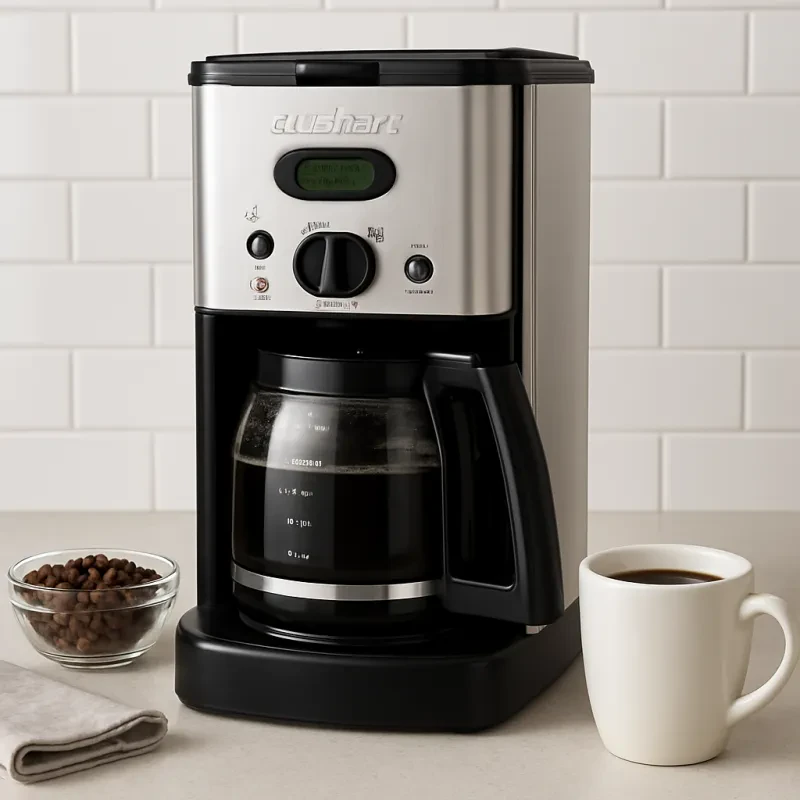Published: January 2025 | Reading time: 12 minutes | Updated regularly
Finding the perfect coffee brewing method can transform your daily coffee ritual from ordinary to extraordinary. Whether you're a coffee beginner or an experienced home barista, understanding different brewing techniques will help you discover new flavors and find your ideal cup.
In this comprehensive guide, we'll explore 10 popular coffee brewing methods, from quick and convenient options to more ceremonial approaches. Each method produces unique flavor profiles, and we'll help you choose the right equipment and technique for your taste preferences.
Table of Contents
- What Makes a Great Brewing Method?
- 10 Coffee Brewing Methods Compared
- Equipment Recommendations
- Brewing Tips for Better Coffee
- Frequently Asked Questions
What Makes a Great Brewing Method?
Before diving into specific brewing techniques, it's important to understand the key factors that influence coffee extraction:
Grind Size: Different brewing methods require specific grind sizes, from coarse (French press) to fine (espresso).
Water Temperature: Most brewing methods work best with water between 195-205°F (90-96°C).
Brew Time: Contact time between water and coffee grounds affects extraction and flavor.
Water-to-Coffee Ratio: Generally ranges from 15:1 to 17:1 (water to coffee) depending on the method.
Brewing Equipment Quality: Well-designed coffee equipment ensures consistent results and better extraction.
10 Coffee Brewing Methods Compared
1. Drip Coffee Maker (Electric)
Best for: Convenience, large batches, consistent daily brewing
Electric drip coffee makers are the most common brewing method in American homes, offering convenience and consistency for daily coffee consumption.
How it works: Hot water is heated in a reservoir and dripped over coffee grounds in a filter basket, then collected in a carafe below.
Grind Size: Medium Brew Time: 4-6 minutes Flavor Profile: Clean, balanced, mild acidity
Pros:
- Extremely convenient and automated
- Great for brewing multiple cups
- Consistent results once dialed in
- Many models include programmable features
Cons:
- Limited control over brewing variables
- Water temperature may not reach optimal range
- Can produce flat or over-extracted coffee
Recommended Equipment: Technivorm Moccamaster for premium quality, or Bonavita Connoisseur for excellent value.
2. Pour Over Coffee (V60, Chemex, Kalita Wave)
Best for: Coffee enthusiasts who enjoy the brewing process and want full control
Pour over brewing puts you in complete control of every variable, allowing you to highlight specific flavors in different coffee beans.
How it works: Hot water is manually poured over coffee grounds in a circular motion, allowing for precise control of extraction.
Grind Size: Medium to medium-fine Brew Time: 2-4 minutes Flavor Profile: Bright, clean, complex flavors highlighted
Popular Pour Over Methods:
- Hario V60: Spiral ribs and large hole create fast, even extraction
- Chemex: Thick filters produce exceptionally clean coffee
- Kalita Wave: Flat-bottom design ensures even saturation
Pros:
- Complete control over brewing variables
- Highlights coffee's unique characteristics
- Relatively affordable equipment
- Great for single-origin coffees
Cons:
- Requires practice and technique
- Time-consuming for multiple cups
- Needs attention throughout brewing process
Recommended Equipment: Hario V60 Ceramic Dripper, Chemex Classic 6-Cup, or Kalita Wave 185.
3. French Press (Press Pot)
Best for: Full-bodied coffee lovers, camping, brewing for groups
The French press produces rich, full-bodied coffee with pronounced oils and sediment that creates a heavy mouthfeel.
How it works: Coffee grounds steep in hot water for 4 minutes, then a metal mesh plunger separates the grounds from the brewed coffee.
Grind Size: Coarse Brew Time: 4 minutes steeping Flavor Profile: Full-bodied, rich, heavy mouthfeel with oils
Pros:
- Simple, no-fail brewing method
- Produces full-bodied, rich coffee
- Great for camping or travel
- Inexpensive equipment
- Easy to clean
Cons:
- Some sediment in final cup
- Can over-extract if left too long
- Limited to one grind size/time combination
Recommended Equipment: Bodum Chambord French Press or Frieling Double Wall Stainless Steel for better heat retention.
4. Espresso
Best for: Coffee shop-style drinks, intense coffee flavor, milk-based beverages
Espresso is a concentrated coffee brewing method that serves as the foundation for cappuccinos, lattes, and other specialty drinks.
How it works: Finely ground coffee is tamped into a portafilter, and hot water is forced through under 9 bars of pressure in 25-30 seconds.
Grind Size: Very fine Brew Time: 25-30 seconds Flavor Profile: Intense, concentrated, full-bodied with crema
Pros:
- Intense, concentrated flavor
- Base for milk drinks
- Quick brewing time once dialed in
- Creates beautiful crema
Cons:
- Expensive equipment required
- Steep learning curve
- Requires precision and practice
- Daily maintenance needed
Recommended Equipment: Breville Bambino Plus for beginners, or Rancilio Silvia for serious enthusiasts.
5. AeroPress
Best for: Travel, experimentation, clean and versatile brewing
The AeroPress combines immersion and pressure brewing, creating a unique and versatile coffee experience with easy cleanup.
How it works: Coffee grounds steep in hot water, then air pressure forces the coffee through a paper filter into your cup.
Grind Size: Medium-fine to fine Brew Time: 1-2 minutes Flavor Profile: Clean, smooth, low acidity, versatile
Pros:
- Extremely portable and durable
- Fast brewing time
- Easy cleanup
- Versatile (normal or inverted method)
- Consistent results
Cons:
- Only makes one cup at a time
- Requires proprietary filters
- Some find it gimmicky
Recommended Equipment: AeroPress Original or AeroPress Go for travel.
6. Moka Pot (Stovetop Espresso)
Best for: Strong coffee lovers, stovetop brewing, Italian-style coffee
The Moka pot creates strong, concentrated coffee using steam pressure, offering an authentic Italian brewing experience.
How it works: Water in the bottom chamber creates steam pressure that pushes water up through coffee grounds into the top chamber.
Grind Size: Medium-fine Brew Time: 5-10 minutes Flavor Profile: Strong, concentrated, slightly bitter, full-bodied
Pros:
- Creates strong, concentrated coffee
- No electricity required
- Durable and long-lasting
- Authentic Italian brewing method
- Great for camping
Cons:
- Can produce bitter coffee if not careful
- Limited control over variables
- Requires stovetop or heat source
- Can be tricky to master timing
Recommended Equipment: Bialetti Moka Express 6-Cup is the classic choice.
7. Cold Brew
Best for: Hot weather, smooth coffee, make-ahead convenience
Cold brew creates smooth, low-acid coffee through long extraction time with cold water, perfect for hot summer days.
How it works: Coarse coffee grounds steep in cold water for 12-24 hours, then the concentrate is filtered and diluted.
Grind Size: Extra coarse Brew Time: 12-24 hours Flavor Profile: Smooth, low acidity, sweet, concentrated
Pros:
- Very smooth, low-acid coffee
- Can be made in large batches
- Keeps well in refrigerator
- Great for hot weather
- Easy to make at home
Cons:
- Long brewing time
- Requires planning ahead
- Uses more coffee grounds
- Can taste flat without proper ratios
Recommended Equipment: Oxo Good Grips Cold Brew Coffee Maker or Toddy Cold Brew System.
8. Turkish Coffee (Ibrik/Cezve)
Best for: Traditional experience, very strong coffee, cultural appreciation
Turkish coffee is one of the oldest brewing methods, creating an intensely strong and culturally significant coffee experience.
How it works: Finely ground coffee and sugar are simmered in a special pot (cezve) until it foams, then served unfiltered.
Grind Size: Extra fine (powder-like) Brew Time: 3-5 minutes Flavor Profile: Very strong, thick, intense, often sweet
Pros:
- Rich cultural and historical significance
- Unique, intense flavor experience
- No filters required
- Creates beautiful foam (crema)
- Social and ceremonial aspect
Cons:
- Requires very fine grind
- Grounds remain in cup
- Takes practice to master
- Not for everyday drinking for most people
Recommended Equipment: Traditional Copper Cezve for authenticity.
9. Siphon Coffee (Vacuum Pot)
Best for: Coffee theater, clean flavor, special occasions
Siphon brewing combines full immersion with vacuum filtration, creating a theatrical brewing experience and exceptionally clean coffee.
How it works: Water is heated in the bottom chamber, creating vapor pressure that pushes water into the upper chamber where it mixes with coffee. When heat is removed, vacuum pulls brewed coffee back down through a cloth filter.
Grind Size: Medium Brew Time: 4-6 minutes Flavor Profile: Clean, bright, complex, tea-like clarity
Pros:
- Spectacular brewing theater
- Produces very clean coffee
- Full immersion extraction
- Impressive for guests
- Unique flavor profile
Cons:
- Expensive and fragile equipment
- Time-consuming setup and cleanup
- Requires attention during brewing
- Learning curve for proper technique
Recommended Equipment: Hario Technica Siphon or Bodum Pebo Vacuum Coffee Maker.
10. Clever Dripper
Best for: Beginner-friendly pour-over, consistency, easy cleanup
The Clever Dripper combines the ease of immersion brewing with the clean results of pour-over, making it perfect for beginners who want great coffee without the technique.
How it works: Coffee grounds steep in hot water like a French press, then a valve at the bottom releases the coffee through a paper filter when placed on a cup.
Grind Size: Medium-coarse Brew Time: 2-6 minutes steeping Flavor Profile: Clean, balanced, forgiving
Pros:
- Very forgiving and consistent
- Combines benefits of immersion and pour-over
- Easy to use for beginners
- Clean cup with paper filtration
- Hard to mess up
Cons:
- Limited availability
- Less control than traditional pour-over
- Only makes one cup at a time
Recommended Equipment: Clever Coffee Dripper Large.
Equipment Recommendations by Budget
Budget-Friendly Options ($10-50)
- French Press: Bodum Brazil French Press - $25
- Pour Over: Hario V60 Plastic Dripper - $15
- AeroPress: AeroPress Original - $40
Mid-Range Options ($50-200)
- Drip Coffee Maker: Bonavita Connoisseur - $150
- Pour Over Kit: Hario V60 Ceramic Set - $80
- Espresso: Breville Bambino - $180
Premium Options ($200+)
- Drip Coffee: Technivorm Moccamaster - $320
- Espresso: Breville Barista Express - $700
- Siphon: Hario Technica Siphon - $280
Essential Coffee Brewing Accessories
Coffee Grinders
A quality grinder is crucial for any brewing method:
- Budget: Hario Skerton Plus Manual Grinder - $50
- Electric: Baratza Encore Burr Grinder - $170
- Premium: Baratza Virtuoso+ Grinder - $250
Scales and Timers
Precision is key for consistent results:
- Hario V60 Drip Scale - $60
- Acaia Pearl Coffee Scale - $140
Water and Temperature
- Hario Buono Kettle for pour-over - $60
- Fellow Stagg EKG Electric Kettle - $165
Brewing Tips for Better Coffee
Universal Tips for All Methods
-
Use Fresh, Quality Coffee Beans
- Buy coffee roasted within 2-4 weeks
- Store beans in an airtight container away from light and heat
- Grind just before brewing for best flavor
-
Water Quality Matters
- Use filtered water if your tap water tastes off
- Ideal water temperature: 195-205°F (90-96°C)
- Water should be about 30 seconds off boiling
-
Measure Your Ratios
- Start with a 1:15 to 1:17 coffee-to-water ratio
- Use a scale for accuracy
- Adjust to taste preferences
-
Grind Size Consistency
- Invest in a burr grinder for even particle size
- Match grind size to brewing method
- Adjust grind if coffee tastes off
Troubleshooting Common Problems
Coffee Tastes Sour or Weak:
- Grind finer
- Increase brew time
- Use hotter water
- Add more coffee
Coffee Tastes Bitter or Over-Extracted:
- Grind coarser
- Reduce brew time
- Use cooler water
- Use less coffee
Inconsistent Results:
- Use a timer and scale
- Check water temperature
- Ensure grind consistency
- Follow ratios precisely
Health Benefits of Different Brewing Methods
Filtered vs Unfiltered Coffee
Filtered Methods (Pour over, drip, AeroPress):
- Remove cafestol and kahweol (cholesterol-raising compounds)
- Generally considered healthier for regular consumption
- Cleaner taste with less oils
Unfiltered Methods (French press, Turkish coffee):
- Retain natural oils and compounds
- May raise cholesterol if consumed regularly
- Fuller body and more antioxidants
Caffeine Content by Method
- Espresso: 63mg per 1oz shot
- Drip Coffee: 95mg per 8oz cup
- French Press: 107mg per 8oz cup
- Cold Brew: 100-200mg per 8oz cup (varies by concentration)
Choosing Your Ideal Brewing Method
Consider these factors when selecting a brewing method:
Time and Convenience
- Quick and Easy: Drip coffee maker, AeroPress
- Moderate Effort: Pour over, French press
- Time-Intensive: Espresso, siphon, Turkish coffee
Flavor Preferences
- Clean and Bright: Pour over, drip coffee
- Full-Bodied and Rich: French press, espresso
- Smooth and Mellow: Cold brew, clever dripper
Budget Considerations
- Most Affordable: French press, basic pour over
- Moderate Investment: AeroPress, mid-range drip maker
- Higher Investment: Espresso equipment, siphon
Serving Size Needs
- Single Cup: Pour over, AeroPress, espresso
- Multiple Cups: Drip coffee maker, large French press
- Batch Brewing: Cold brew
Frequently Asked Questions
What's the best coffee brewing method for beginners?
For beginners, we recommend starting with a French press or drip coffee maker. French presses are forgiving, inexpensive, and produce consistently good coffee. Drip coffee makers offer convenience and consistency, making them perfect for daily use.
Which brewing method makes the strongest coffee?
Turkish coffee and espresso create the strongest, most concentrated coffee. However, French press and cold brew concentrate also produce very strong coffee when prepared properly.
Do I need expensive equipment to make good coffee?
Not necessarily. A basic French press ($25) or plastic V60 dripper ($15) can produce excellent coffee when paired with fresh beans and proper technique. However, investing in a quality grinder ($100-200) will make a bigger difference than expensive brewing equipment.
How do I choose between pour over methods?
- V60: Best for experienced brewers who want control and bright flavors
- Chemex: Produces the cleanest cup and looks beautiful
- Kalita Wave: Most forgiving pour over method for beginners
What's the difference between cold brew and iced coffee?
Cold brew is made by steeping coffee grounds in cold water for 12-24 hours, creating a concentrate that's smooth and low in acid. Iced coffee is hot-brewed coffee that's cooled and poured over ice, retaining more acidity and brightness.
How fine should I grind coffee for each method?
- Turkish Coffee: Extra fine (powder-like)
- Espresso: Fine
- AeroPress/Pour Over: Medium-fine
- Drip Coffee: Medium
- French Press: Coarse
- Cold Brew: Extra coarse
Conclusion: Find Your Perfect Brew
The world of coffee brewing offers endless opportunities to explore flavors, techniques, and experiences. Whether you prefer the convenience of a drip coffee maker, the ritual of pour-over brewing, or the intensity of espresso, there's a perfect method waiting for you to discover.
Start with one method that matches your lifestyle and taste preferences, master it, then gradually explore others. Remember that great coffee comes from the combination of quality beans, proper equipment, good technique, and personal preference.
The most important thing is to enjoy the process and the results. Coffee brewing is both an art and a science, but ultimately, the best brewing method is the one that consistently produces coffee you love to drink.
Ready to Start Brewing?
Browse our complete collection of coffee brewing equipment to find the perfect gear for your chosen method. From budget-friendly options to premium equipment, we've tested and reviewed everything you need to brew amazing coffee at home.
Disclaimer: Cool Coffee Gear participates in the Amazon Associates Program. When you purchase through our links, we may earn a commission at no additional cost to you. This helps support our testing and reviews.
Related Articles:
